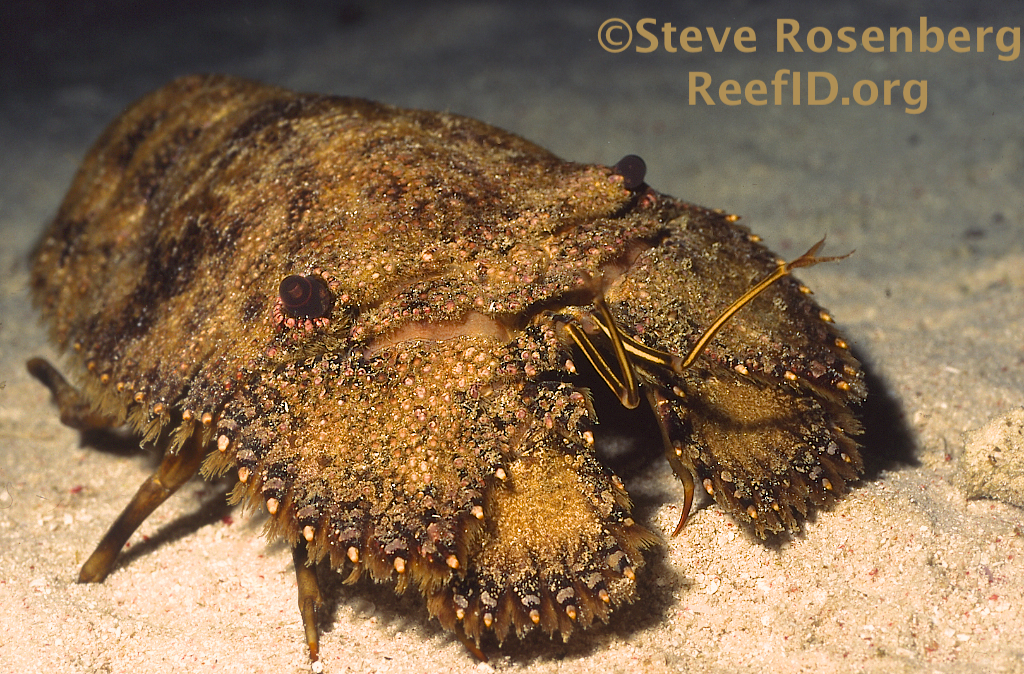Slipper lobsters are members of the scyllaridae family of decapod crustaceans. Decapods are simply “10-legged” crustaceans, including crabs and lobsters that have five pairs of walking legs. They inhabit coral reefs, as well as seagrass and sandy areas. This slipper lobster was photographed at night in the sand off Paraiso (Paradise) Reef in Cozumel.

The Sculptured Slipper Lobster
Divers can find the sculptured slipper lobster, Parribacus antarcticus, along with the ridged slipper lobster and the Spanish lobster, in the Caribbean, Florida and the Bahamas. These crustaceans have a somewhat flattened appearance and a horseshoe-shaped carapace, the hard shell or section of the exoskeleton that covers the head and chest. This makes them look like camouflaged walking tanks.
Slipper lobsters have no claws. They are nocturnal feeders, and hide in recesses and caves in the reefs during the day. The slipper lobster digs into sand to hide and perhaps also sniff out buried worms and mollusks that make up its diet. Those same 10 legs that let them cling to the ground with such tenacity are also used to pry open bivalve shells.
The sculptured slipper lobster has numerous spikes projecting from the edges of the plate-like antennae. The carapace is relatively smooth. There are numerous bristle-like hairs on the body, especially along its sides. The body color is usually tan to yellowish brown. They grow to 7 or 8 inches in length. They are a bit skittish. If threatened, they will propel themselves backward by rapidly flapping their tails.
By Steve Rosenberg for ReefID

